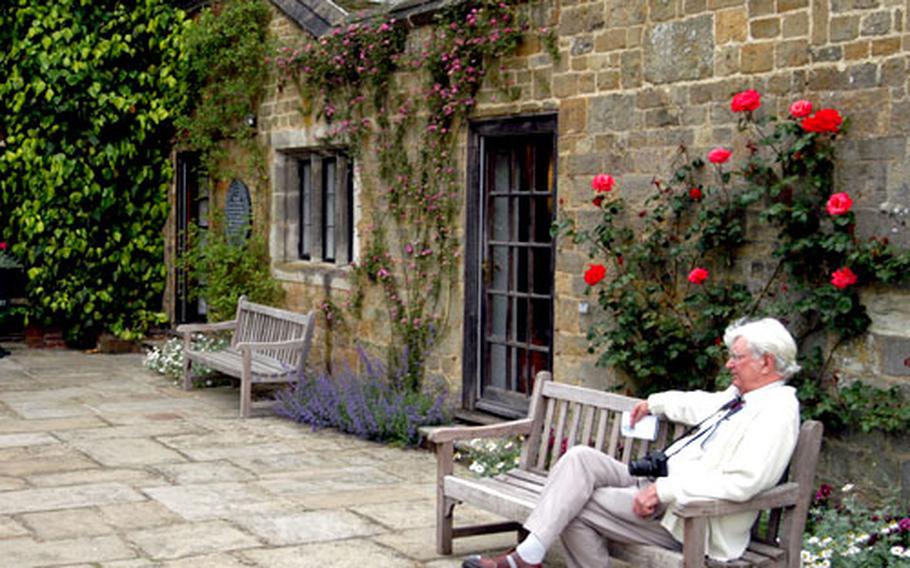
A visitor relaxes on the patio of Chartwell, the home of Winston Churchill for most of his adult life. (Ron Jensen / S&S)
Winston Churchill said of his home just south of London, “A day away from Chartwell is a day wasted.”
Churchill was one of the giants of the 20th century and he certainly wasted few days in his 90 years, whether he was at this lovely home or away from it.
In fact, he saved England and the world in 1940 when he refused to agree with the British Parliament that thought Adolf Hitler was the kind of guy it could deal with. Churchill knew better, and Nazi Germany ended in the rubble of Berlin five years later, partly because of Churchill’s leadership.
Churchill, who purchased Chartwell in 1922, lived in London during the war years. When he and his wife, Clementine, returned to Chartwell, he could not afford to live in it. Some friends who thought him the greatest living Englishman were embarrassed that such a man could not afford the house he loved. It was purchased for him and given to the National Trust, which administers it still.
Churchill died in 1965 and his widow moved away, not wanting to live in the house without her beloved husband.
Clementine gave the National Trust the family’s furniture and Chartwell now looks much as it did in the 1930s, complemented by awards and honors, autographed photos and other mementoes from Churchill’s later life. There are many paintings by the man himself, who was a pretty fair artist.
His Nobel Prize for Literature is on display. So is his honorary U.S. citizenship certificate, signed by President Kennedy.
Guides in each of the rooms will answer questions and point out objects of particular interest, such as the British flag above the fireplace in the study. The flag was hoisted over Rome on June 4, 1944, the first British flag to fly over a liberated European capital, and was later presented to the wartime prime minister.
You should notice, too, a piece of shrapnel that barely missed Churchill while he was fighting on the Western Front in World War I.
The study is the key room in the house. Churchill paced the wooden floors, dictating his many books and speeches to a scribbling secretary seated at the writing desk. One can almost smell the cigar smoke that must have clouded the room.
The dining room, too, is a special place. From the table is a wonderful view of the lovely garden and the extensive landscape. It pays to stop for a minute and consider the mealtime companions who shared this room and the conversations that flowed with the wine. It would have been a wonderful place to be a quiet mouse in the corner of the room.
Churchill’s life was rich and full and the world is better off because he lived when he did. It is a humbling and inspiring treat to walk through the house where he lived for so many years.
If you go ...
Chartwell is southeast of London, just off the M-25 ring road. Exit at Westerham and drive on B2026, looking for signs along the way.
The house is open 11 a.m. to 5 p.m. Wednesday to Sunday until Nov. 9. It is also open on Bank Holiday Mondays and Tuesdays during July and August. It is closed in the winter, from Nov. 10 to late March.
A gift shop and restaurant are on the site. A studio on the grounds displays more than 100 of Churchill’s paintings.
Admission is 6.50 British pounds, about $11, for adults and 3.25 pounds, about $5.50, for children. A family ticket costs 16.25 pounds, about $28, and allows entry for two adults and two children.